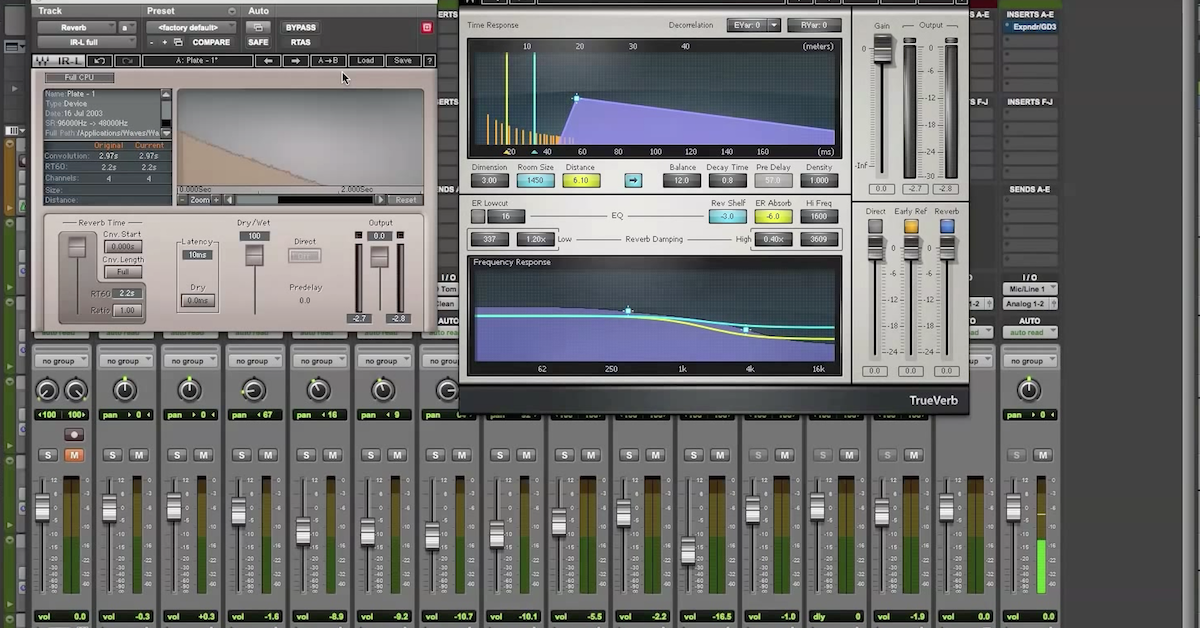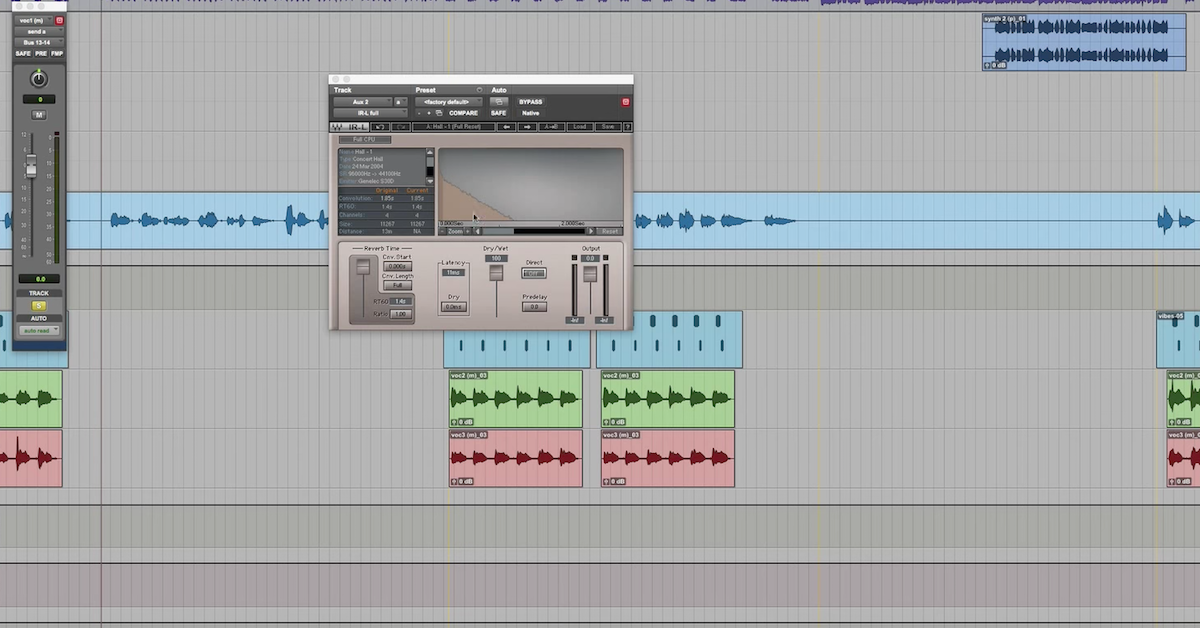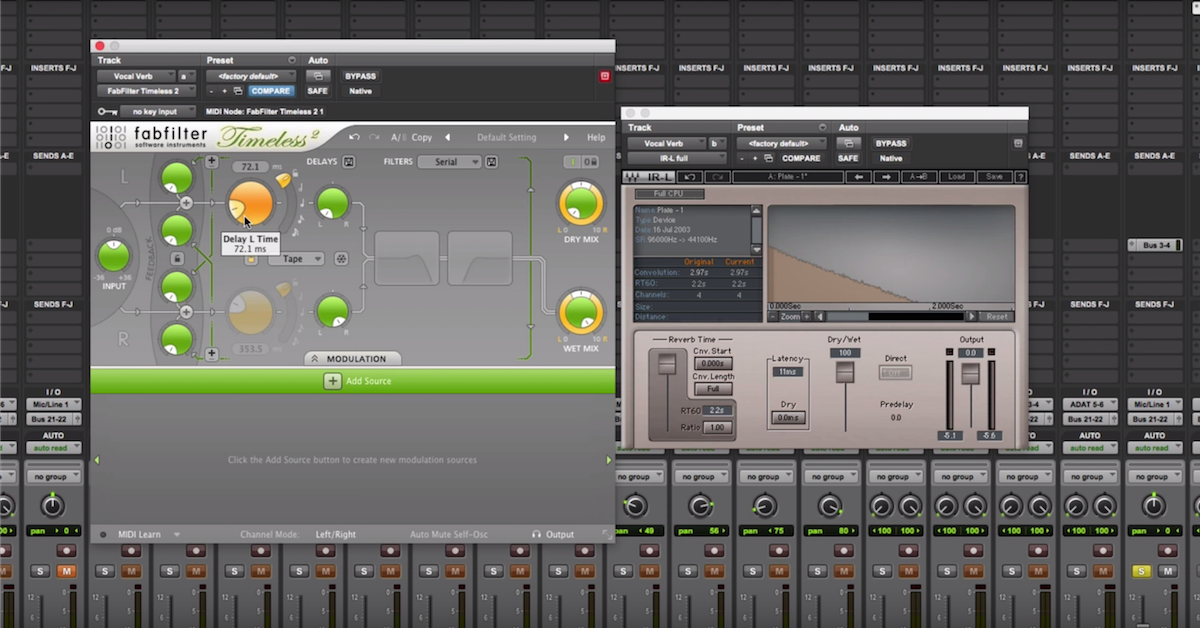Convolution vs Algorithmic Reverb
Article Content
Reverberation (or reverb) is one of the most important effects in the ‘toolbelt’ of a recording or mixing engineer. It ‘s conventionally used to make a signal sound like it was produced in a sonically pleasing acoustic environment. When sound is produced in an acoustic environment, the surroundings reflect echoes (or delayed versions) of the sound. Reverb, as an effect, attempts to create these echos “artificially” for a signal.
There are many different ways that reverb can be created and added to a signal. Chamber reverbs are “real-life” rooms with a speaker and a microphone. To create chamber reverb, a signal is played through the speaker while the microphone records the sound echoing in the room. Plate reverb follows a similar procedure, except a vibrating metal plate is placed in the signal path.
Reverb can also be created without actually creating any acoustic vibrations and echoes. Rather, echoes can be created electronically. Electronic reverb became really popular in the 70’s, 80’s, and 90’s. The sound of reverb can practically distinguish one era from the next because of the famous electronic hardware reverb units and sonic characteristics of the time period.
With the adoption of the computer based Digital Audio Workstation, reverb could be created through software and implement as a plug-in. Therefore, expensive hardware units and specialized acoustic environments were no longer necessary to create reverb. Software reverbs can be categorized in two types: convolution and algorithmic (essentially all other non-convolution). The distinction is based on the method or algorithm used to create the reverb.
Convolution reverb uses an Impulse Response (IR) to create reverb. An impulse response is a representation of how a signal changes when going through a system (in this case the ‘system’ is an acoustic environment). An impulse response of both real-life acoustic environments and electronic hardware reverb units can be created and used. The advantage of convolution reverb is that it can accurately simulate reverb and can sound very natural. The disadvantage of convolution reverb is that is it computationally complex which can take up a lot of a computer’s processing.
Software reverb that does not use convolution creates echoes using mathematical algorithms to simulate the delays that occur in reverb. The synthesis of echoes can be performed much for efficiently on a computer using less processing. The trade-off is that these algorithms rarely sound as natural as convolution reverb.






